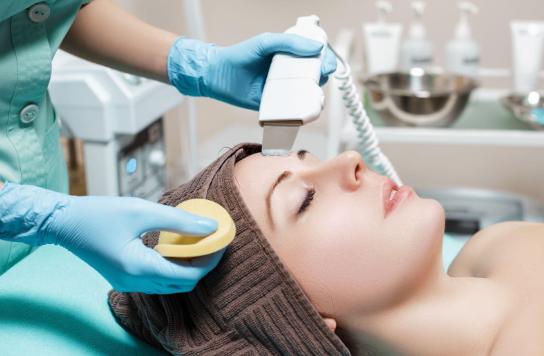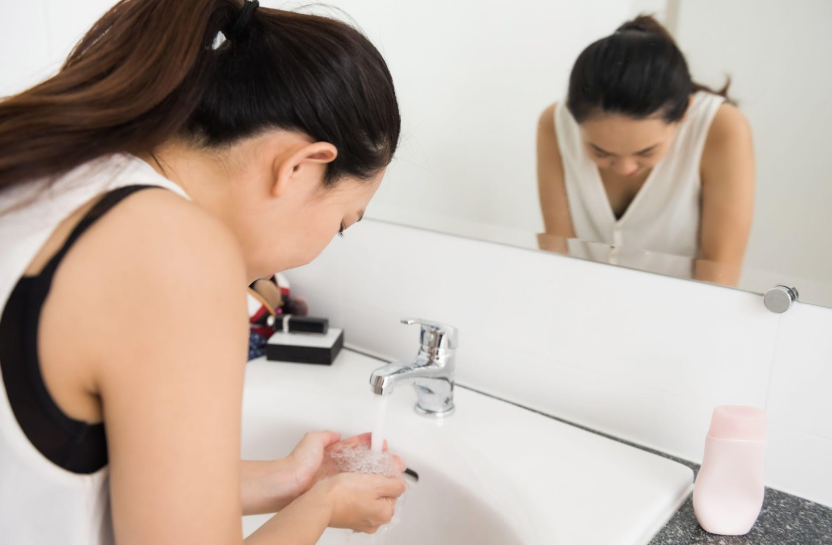At What Age Should You Start Using Retinol and Vitamin C?
At What Age Should You Start Using Retinol and Vitamin C?

When it comes to skincare, there always seems to be countless products promising youthful, radiant skin. Among them, retinol and vitamin C stand out as two of the most effective ingredients. However, because they’re so strong, users need to be aware of when the best time to introduce them to your skincare routine and how much to introduce when you do.
What are Retinol and Vitamin C?
Before we discuss the ideal age to start using these ingredients, let's break down what they are and why they matter in skincare. Retinol is a derivative of vitamin A, and it's widely recognized for its ability to accelerate cell turnover. This process helps to reduce the appearance of fine lines, wrinkles, and hyperpigmentation, making it a go-to ingredient for those aiming to maintain youthful skin. Retinol also works to unclog pores, which can help prevent acne and improve overall skin texture.
Vitamin C, on the other hand, is a powerful antioxidant that plays a key role in collagen production. It brightens the skin, reduces the appearance of dark spots, and protects against environmental damage like pollution and UV rays. When used consistently, vitamin C can give your skin a more even tone and a natural glow.
When to Start Using Retinol
Retinol is often seen as a potent anti-aging ingredient, but its benefits extend beyond just wrinkle reduction. Because of its ability to boost cell turnover and clear pores, retinol can be beneficial for a range of skin concerns. Regular use of retinol can help minimize the appearance of fine lines, improve skin texture, and reduce hyperpigmentation, but needs to be used with care.
The age at which you should start using retinol depends largely on your skin type and goals, so let’s take a closer look at a few age ranges:
Teens and Early 20s for Prevention and Acne Control
In your teens and early 20s, your skin is likely still producing plenty of collagen and elastin, so wrinkle prevention might not be top of mind. However, this is a great time to start using retinol if you struggle with acne. Retinol can help regulate skin cell turnover, preventing clogged pores and reducing breakouts.
For those dealing with persistent acne, a dermatologist might recommend a prescription-strength retinoid, which is a stronger form of retinol. But for most people in this age group, a lower concentration of over-the-counter retinol products can be effective.
Mid- to Late 20s for Early Anti-Aging
As you enter your mid- to late 20s, your skin's natural cell turnover begins to slow down, which is when early signs of aging may start to appear. This is an ideal time to introduce retinol into your skincare routine, even if you’re not yet seeing visible signs of aging. Using retinol at this stage can help delay the appearance of fine lines and maintain the smooth texture of your skin.
Start with a lower concentration, around 0.25% to 0.3%, and gradually increase as your skin builds tolerance. The key is to start slow—introduce retinol once or twice a week, and then increase frequency as your skin adjusts.
30s and Beyond for an Anti-Aging Powerhouse
By the time you reach your 30s, your skin may start showing more noticeable signs of aging, such as fine lines, wrinkles, and uneven texture. This is when retinol becomes an essential part of your skincare arsenal.
In your 30s, you can consider using a higher concentration of retinol, typically around 0.5% to 1%. However, if you have sensitive skin, you may want to stick with a lower concentration or consult a
dermatologist to find the right strength for you.
When to Start Using Vitamin C
Vitamin C is a versatile ingredient that offers benefits for all ages. It’s a great addition to almost any skincare routine, but knowing when to start can help maximize its benefits.
Let’s break it down by looking at the different age ranges once again:
Teens and Early 20s for Brightening and Protection
In your teens and early 20s, your skin is usually at its peak in terms of collagen production and natural radiance. However, factors like sun exposure, pollution, and stress can still take a toll on your skin, leading to dullness and early signs of damage.
Introducing vitamin C into your skincare routine during this time can help brighten your complexion and provide an extra layer of protection against environmental stressors. Vitamin C neutralizes free radicals—unstable molecules that can damage skin cells—helping to prevent early signs of aging and keeping your skin looking fresh and vibrant.
Vitamin C serums are generally well-tolerated by younger skin, so you can start using them daily. Look for a serum with a concentration of around 10% to 15% for the best results.
Mid- to Late 20s for Collagen Boosting and Tone Correction
As you enter your mid- to late 20s, your skin's collagen production starts to decline, and you might begin to notice subtle changes in your skin's tone and texture. This is an excellent time to ensure that vitamin C is a staple in your skincare routine.
Vitamin C not only boosts collagen production, helping to maintain skin elasticity, but it also works to fade dark spots and hyperpigmentation that may have developed due to sun exposure or acne. By regularly using vitamin C in your mid- to late 20s, you can help maintain an even skin tone and prevent further damage.
You might consider increasing the concentration of vitamin C in your products as your skin ages. Serums with a concentration of 15% to 20% vitamin C are highly effective for people in this age group.
30s and Beyond for Advanced Anti-Aging and Protection
Once you enter your 30s, the effects of aging and environmental stressors become more apparent, making it a great time to introduce vitamin C into your skincare routine. The antioxidant properties of vitamin C help protect the skin from further damage, while its collagen-boosting abilities help to combat the visible signs of aging.
At this stage, using a high-potency vitamin C serum with a concentration of 20% or higher can provide the best results. In addition to applying it in the morning to protect against daily environmental damage, you might also consider using it at night to maximize its benefits.
How to Incorporate Retinol and Vitamin C into Your Skincare Routine
Now that you know the ideal age to start using retinol and vitamin C, let’s talk about how to incorporate these two ingredients into your skincare routine effectively:
Start Slow and Build Tolerance
Both retinol and vitamin C can be potent, especially if your skin is new to them. To avoid irritation, it's crucial to introduce these ingredients gradually. Start with a lower concentration and use them a few times a week, slowly increasing the frequency as your skin builds tolerance.
For retinol, applying it at night is ideal since it can make your skin more sensitive to sunlight. Vitamin C, on the other hand, is best used in the morning because of its protective antioxidant properties.
Layering Retinol and Vitamin C
There’s often confusion about whether you can use retinol and vitamin C together. The answer is yes, but how you layer them matters.
Vitamin C works best in the morning under sunscreen, providing a layer of protection against free radicals and UV damage throughout the day. Retinol, however, should be used at night, as it can increase your skin’s sensitivity to the sun.
If you want to use both in the same routine, consider applying vitamin C in the morning and retinol at night. Alternatively, you can alternate nights if your skin is sensitive, using vitamin C one night and retinol the next.
The Importance of Moisturizing and Sunscreen
Both retinol and vitamin C can be drying, so it's necessary to follow up with a good moisturizer to keep your skin hydrated. For retinol users, a moisturizer that contains ceramides or hyaluronic acid can help soothe and repair the skin barrier.
Sunscreen is non-negotiable when using either retinol or vitamin C. Retinol can increase your skin's sensitivity to the sun, while vitamin C can be less effective if your skin is exposed to UV rays without protection. Use a broad-spectrum sunscreen with at least SPF 30 every morning to protect your skin from sun damage.
Choosing the Right Products
When it comes to selecting retinol and vitamin C products, quality matters. Look for products from reputable brands that use stabilized forms of these ingredients. Consider these tips for choosing the right products:
- For Retinol: Start with a lower concentration if you're new to retinol. Look for formulations that include soothing ingredients like niacinamide or hyaluronic acid. Consider encapsulated retinol, which is often less irritating and more stable.
- For Vitamin C: Choose a serum with a concentration of 10% to 20% vitamin C for best results. Look for vitamin C in the form of L-ascorbic acid, which is the most effective. Make sure the product is packaged in an opaque, airtight container to maintain its potency.
At
Pine Belt Dermatology, we can help make sure your skin stays healthy and clear, no matter your age.
Contact us today!











